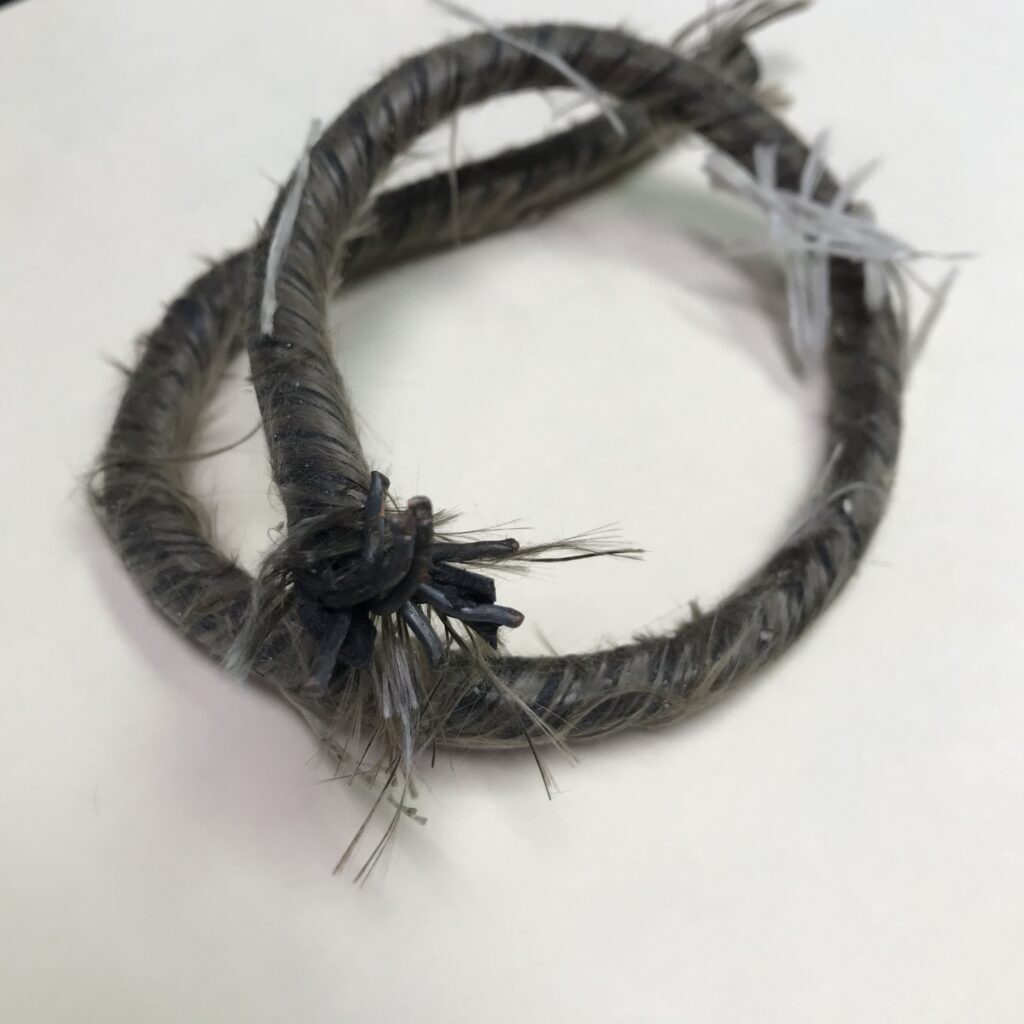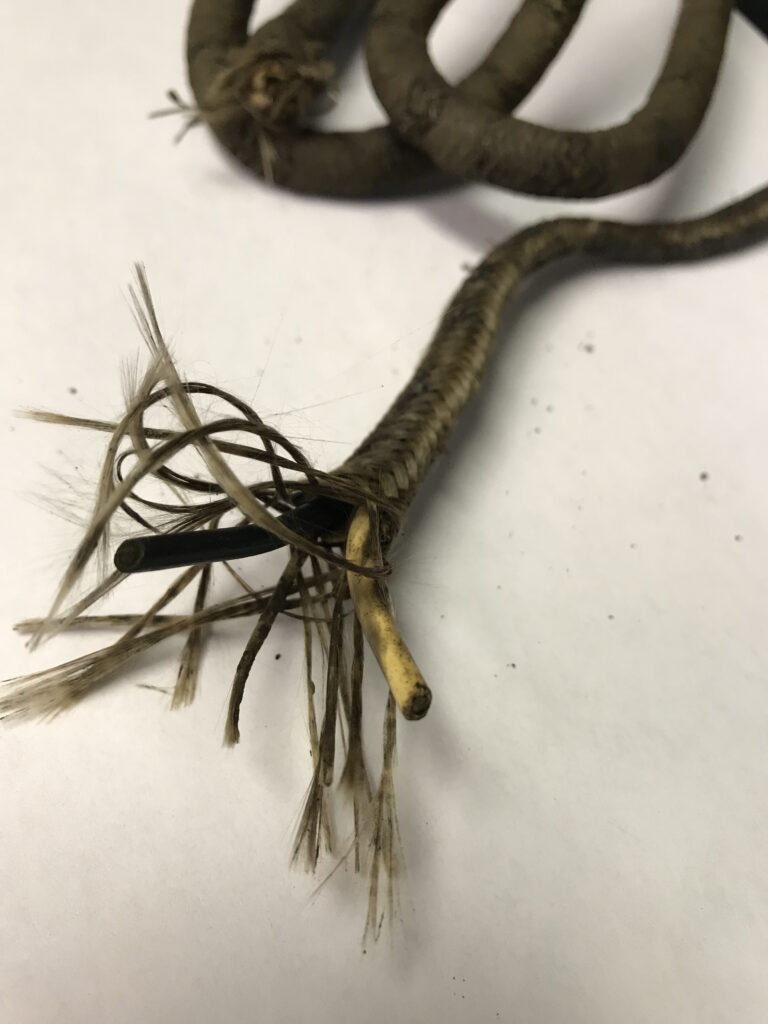History
If your home was built prior to the 1950’s there may be a chance cloth wiring was installed in your home. Because it dates back to the late 1800’s when Thomas Edison made his patent and introduced his invention, it was first known as “The Electric Conductor”. Edison described his invention to be a great insulator, waterproof and fireproof. Cloth of different kinds were used to cover the naked wires as a sheath to help prevent electrical shocks and/or fires. As a result, it became problematic as time passed. NMC or nonmetallic sheathed cable could have aluminum or copper conductors, depending on the manufacturer and year.
Problems with cloth insulated wiring
Cloth insulated wiring poses several issues such as potentially containing asbestos and insulation degradation. Over time, the cloth sheath would become brittle and crack. Sometimes, it flakes and falls. This cracking would cause exposure of the wires, which then poses electrical danger. For instance, the bare wires – when touched – can cause electrical shock or electrocution. Likewise, when in contact with other objects, it can pose the risk of causing a fire.
Different types
The main types of cloth insulated wiring: fabric-sheathed electrical wire, fabric-sheathed rubber insulated electrical wire, and rubber-insulated cloth wiring with no ground. The differences are pretty obvious, but let’s go over them quickly.
- Fabric-sheathed wiring. This is exactly as it sounds. The conductors, whether aluminum or copper, were wrapped with a cloth of some sort. Depending on the year of production, it could be cotton, rayon, or silk, and they could be treated with a number of things (such as asbestos) to make them fire-retardant. Regardless of what they’d been treated with in the past makes no difference as by now, most of the sheaths are so brittle the retardant doesn’t really protect it anymore.
- Cloth-sheathed rubber insulated wiring. This is basically the same fabric-sheathed wire, but with a type of coating as an extra measure around the wiring itself. The “rubber” contained the wiring, and the cloth wrapped around the “rubber”. It was usually rubber, but there are all sorts of reports of wiring having a tar-like, plastic, or asbestos-containing insulation. *NOTE: only a certified lab can tell you whether or not your insulated wiring contains asbestos.
- There was also cloth-sheathed with- or without rubber insulation that had no ground. (See picture below) This is dangerous in itself for the lack of a grounding wire.
If your home or soon to be home has cloth wiring and you have questions regarding how to address the issue, please do not hesitate to give us a call today and one of our professional electricians can discuss your concerns with you and/or schedule an appointment for an electrical evaluation. Have peace of mind knowing your home’s electrical system is safe.
Disclaimer:
We take great care to provide the most accurate information on this page. However, all content is for informational purposes ONLY and should be considered as General Knowledge or even as entertainment. It should not be relied on, as every case and/or reader is different.
ALWAYS call and check with a qualified electrician before attempting or acting upon anything you read on this site. Changes are always happening within the NEC, standards and regulations, and State, County, and City by-laws.





